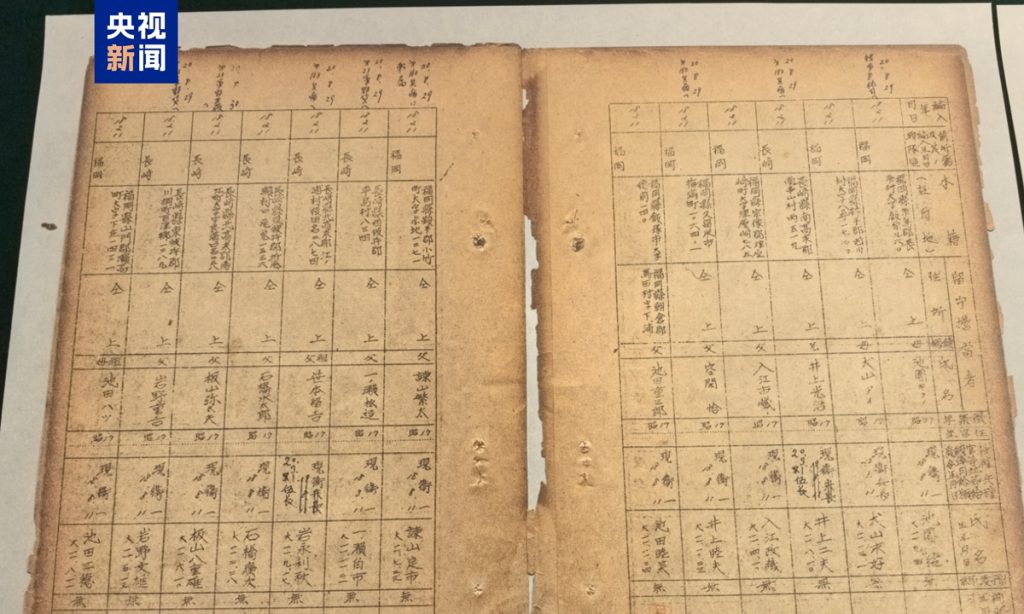Complete Unit 8604 roster serves as crucial evidence of Japan’s biological warfare in South China

A full roster of Japan's Unit 8604, obtained from the National Archives of Japan, was unveiled in China for the first time on Monday, and such complete personnel list serves as crucial evidence of the Japanese Imperial Army germ-warfare in South China during its invasion of China, CCTV News reported on Monday.
Donated by Japanese scholar Seiya Matsuno, the list was long classified as a military secret by Japan after World War II. Under mounting pressure, the roster of Unit 8604's personnel was finally released on May 14. It is the only known core archival document detailing the unit's members and serves as vital primary evidence of the Japanese army's bacteriological warfare in South China.
During the Chinese People's War of Resistance against Japanese Aggression, the Japanese army launched multiple germ warfare attacks across China. Alongside the infamous Unit 731, Unit 8604—based in Guangzhou, South China's Guangdong Province—conducted live human experiments using bacteria and viruses, resulting in the mass killing of refugees from Guangdong and Hong Kong.
Compiled in 1945 and sent to Tokyo for archival purposes, the roster contains the names of 860 members of Unit 8604—exceeding both the number listed in the postwar veterans' association registry and the number identified by Chinese scholars to date.
The roster includes detailed information such as members' names, birthdates, places of origin, dates of assignment to the unit, prior military affiliations and transfer dates, service category, branch, rank, monthly salary, enlistment date, date of current rank conferment, as well as the names and addresses of next of kin in Japan.
Notably, the roster also contains information not found in personnel records of other Japanese biological warfare units, such as the postwar status of more than half of the listed members—including causes of death, dates of arrest by Chinese war crimes tribunals, and other developments after Japan's defeat.
Wu Peijun, a researcher at the Center for South China Anti-Japanese War History at South China Normal University, described the roster with four superlatives: the most authoritative archive, the most complete personnel list, the most detailed records, and the most crucial document. He called it a key to unlocking the secrets of Unit 8604 and Japan's broader biological warfare operations during the invasion of China.
According to Wu, the roster enables historians to clarify fundamental facts such as the personnel structure, organizational setup, and scale of Unit 8604.
By comparing it with rosters from other Japanese biological warfare units—such as Unit 731 and Unit Oka 9420—scholars can trace internal and external connections among these units and uncover how they coordinated during the war. This significantly enhances understanding of Japan's biological warfare system and plays a vital role in fully exposing the extent of its wartime atrocities.